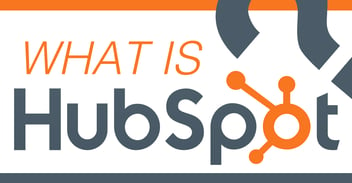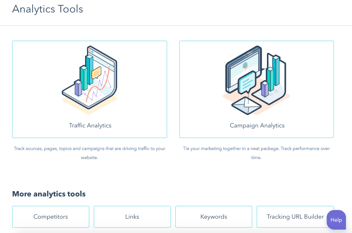An optimized website is an important part of a business's success. An effective SEO strategy draws more of your target audience to your website, allowing you to generate more leads and close more deals. HubSpot offers a wealth of tools for optimizing your website to put you on track for higher rankings in search results.
There are three places in your HubSpot account where you can find SEO recommendations:
- The SEO tool
- The optimize tab in the content editor
- The optimization tab in the page details (Google Search Console integration)
SEO Tool
The SEO tool scans each page of your website, then compiles individual page recommendations into categories, ranking each issue by SEO impact and level of technical expertise required to implement the recommendation. The tool also tells you how many pages are affected and allows you to quickly enter each page’s content editor to implement recommendations (unless the correction requires a developer).
HubSpot’s SEO tool sorts recommendations into the following categories:
- Accessibility—Recommendations to allow screen readers to operate with ease
- Crawling and indexing—Recommendations to help search engines crawl your website
- Mobile experience—Recommendations to improve mobile users’ experience of your website
- On-page SEO—Recommendations to optimize titles, meta descriptions, and word count
- Performance—Recommendations to increase page loading speed
- Security—Recommendations to minimize security risks on your website
- User experience—Recommendations to fix broken links and ensure resources such as fonts, images, and stylesheets load correctly
Optimize Tab in the Content Editor
Inside HubSpot’s content editor, the optimize tab contains SEO recommendations for the page or blog post you are currently editing. Unlike the SEO tool, these recommendations are available before the page is live and appear without you having to prompt HubSpot to scan the page.
The optimize tab in HubSpot’s content editor provides the following types of recommendations:
Title
Reports whether your page has a title, whether it is distinct from the domain name, and whether the title’s length is optimized for display in search engine results pages (SERPs).
Mobile-friendliness
Indicates whether your page is properly set up for mobile viewing, including the size of interactive elements and configuration of viewport tags.
Crawling and indexing
Displays whether the page is hidden from search engines so that you can easily make sure the page is crawlable.
Images
Reports whether all images have alt text.
Meta description
Indicates whether your page has a meta description that is distinct from the title and optimized for display in SERPs.
Header
Helps ensure your page has only one H1 tag.
Links
Displays the number of outbound links on your page and whether excessive links may be interfering with user experience and search engine ranking.
Optimization Tab in the Page Details
Once a page is live, you can view SEO information about it in the optimization tab of the page details. This will show you:
- On-page SEO recommendations
- Inbound links
- Internal links
- Search queries (if you’ve integrated Google Search Console)
The on-page SEO recommendations are the same ones you’d find in the SEO tool for the page you are viewing. Inbound links, also known as backlinks, are links from other sites to the page you are on; backlinks from websites that are popular and have strong authority will increase the rank and authority of your webpage. Internal links are links from other pages on the same domain to the current page you are viewing; these help search engines understand the structure of your website and the relative importance of individual pages. A proper internal linking strategy is critical to your website’s SEO.
Google Search Console is a powerful tool to include in your SEO tech stack. Integrating Google Search Console with HubSpot allows you to view all search queries that display your content in the search results. For each query, the integration shows:
Average position
The page’s average position in search results for a given query.
Clicks
The number of times a user clicked a link to the page from Google’s SERPs for the query.
Impressions
The number of times the page appeared in search results for the query.
Clickthrough rate (CTR)
Calculated by dividing the number of clicks by the number of impressions, or times the link was displayed to the user in search results (A higher rate suggests that your page answers the query.)
Integrating Google Search Console with HubSpot consolidates your SEO reports, allowing you to view your SEO data more efficiently and quickly assess what keywords your website pages are ranking for.
A strong SEO strategy is key to maintaining a successful website. HubSpot monitors your web pages so you don’t have to. HubSpot’s SEO tools empower your website pages to rank higher in search results, which helps you generate more leads. Learn more about SEO and HubSpot by downloading our "Improving SEO with Marketing Analytics" e-book today!



